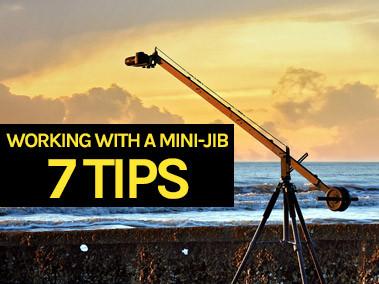Unexplored Angles
Cameras continue to push the boundaries of technology– ever higher pixel counts, greater low-light performance, and better stabilization. While this is extremely helpful in increasing a filmmaker’s or videographer’s production value, it’s only half of the final creative puzzle. An often overlooked and underappreciated area to pay attention to is how to compose a story by shooting unexplored angles and dynamic perspectives to further along the emotional content of your story.
Exciting and interesting perspectives can be achieved at certain positions like if you crouch down for a worm’s eye view or climb up a ladder for a bird’s eye view, but movement between these two extremes can often be difficult or even impossible without the right equipment, and of course our body also has certain limitations, so you need proper equipment that can maximize your time and efficiency.
You may be traveling overseas shooting historical landmarks like the Great Wall of China or filming a music concert packed with people or just shooting a live talk show in your own studio. Our Orion Camera Cranes & Jibs such as the DVC200 and the DVC210 8 foot DSLR and Video Camera Jibs are perfect for long hours of filming and discovering unparalleled shots for your film with the ease of storage space and set up. Our CarryOn Jib is also great for travel– being the world’s smallest camera crane of its kind.

Portable and Powerful Cranes
The Orion DVC200 Camera CraneOrion DVC200 Camera Crane has a tilting camera mount on the side which can hold a camera weighing up to eight pounds while the Orion DVC210 has an extended reach with a compact, inline tilting camera mount for added stability. It includes an extension camera plate which allows you to mount DSLR of full-size video cameras weighing up to 12 pounds. The best part about these portable cranes is that you don’t need tools to assemble them ̶ just follow the instructions on the manual and you can easily set it up in five minutes or less. You also have the option of mounting the crane to your own heavy duty tripod or upgrade with a 4-foot crane extension to elevate your camera’s view to 12 feet!
For effortless and dramatic camera movement, our Orion line is aided with a manual tilt handle which you can unlock, so your camera moves independently of the crane arm for compound shots.
Our powerful cranes are perfect for both the filmmaking hobbyist and professional filmmakers because of their range of features. Beginning with ease of setup to a simple and intuitive operation, our camera jibs add production value at an unbeatable price. And best of all, we back them with a lifetime warranty.

7 Camera Crane Filming Techniques
They say using a crane can be tricky, but with the right crane techniques, you can easily capture a beautiful shot with the DVC200 or 210. The most common crane movements you can use for your shoot include:
- Tracking Crane Technique. By following your subject with the crane, you can evoke a wandering emotion. This technique starts with the crane being on a level plane with your subject as she moves through the scene. The crane pans to follow the subject and the camera may be panned independently to keep the subject in focus.
- Move Up and Move Away. This movement is perfect for those aiming to get a far away perspective of a moving subject. So if you’re shooting a guy skating from above a sloping road down to the streets, you begin your shoot at eye level with the skateboarder facing away from the camera then move your crane upwards as the skateboarder swiftly skates downward the street with the camera slowly moving away from the subject.
- Move Down and Move Toward. Opposite the move up and move away shot, the subject is shot from a distance and as the subject moves closer, the crane slowly moves down and as the camera gets a clear eye-level view of the subject. This creates an intimacy with the character.
- Move Up Expression. This movement is great for a subject in distress. It also shows a strong emotional response.The shot is done by ascending the crane and tilting the camera downwards on the subject. This creates a feeling of loneliness or helplessness.
- Move Up Entrance. This creates excitement when the subject enters an unknown area or a new place for the first time. An example would be done by moving the crane above the subject and over an entrance gate. The limited overhead perspective elicits feelings of tension and excitement for what is to come next.
- Move Up and Tilt Down. This over-the-subject shot begins with the crane moving upwards and the camera tilting down on the subject. The feeling associated with the subject through this movement might be feelings of grief or disappointment.
- Move Down and Tilt Up. In this motion, the camera is positioned at eye level with the subject while the crane gradually moves down with the camera tilting up which shows an inferior point of view. This could be done to express the power of a particular character.
Every crane position portrays an emotion that adds impact to your film. With these crane tricks in mind, you will be able to mold your subject well throughout your story. Find out more helpful tips on this blog and how you can make the most out of our incredible cranes and jibs.



